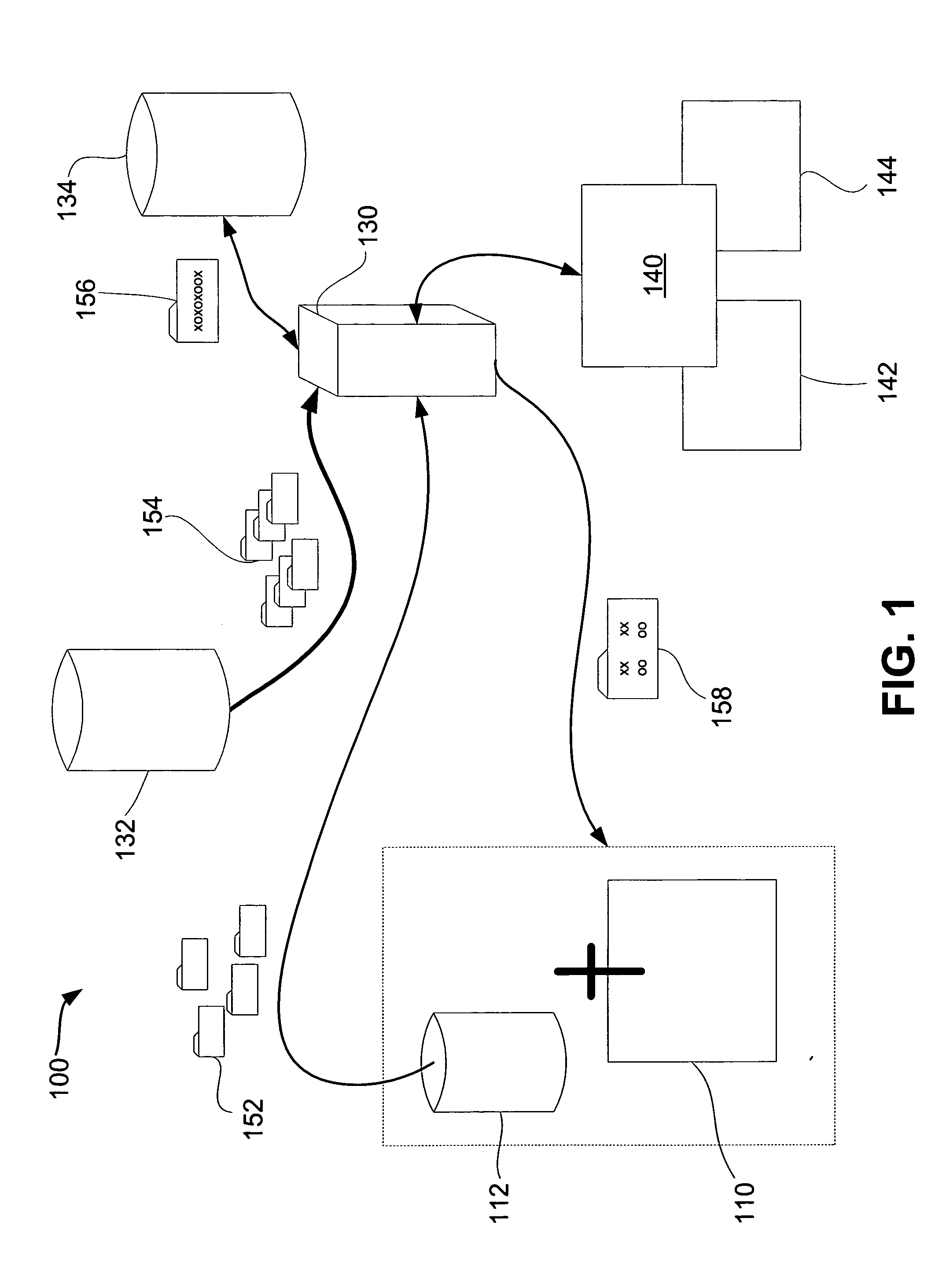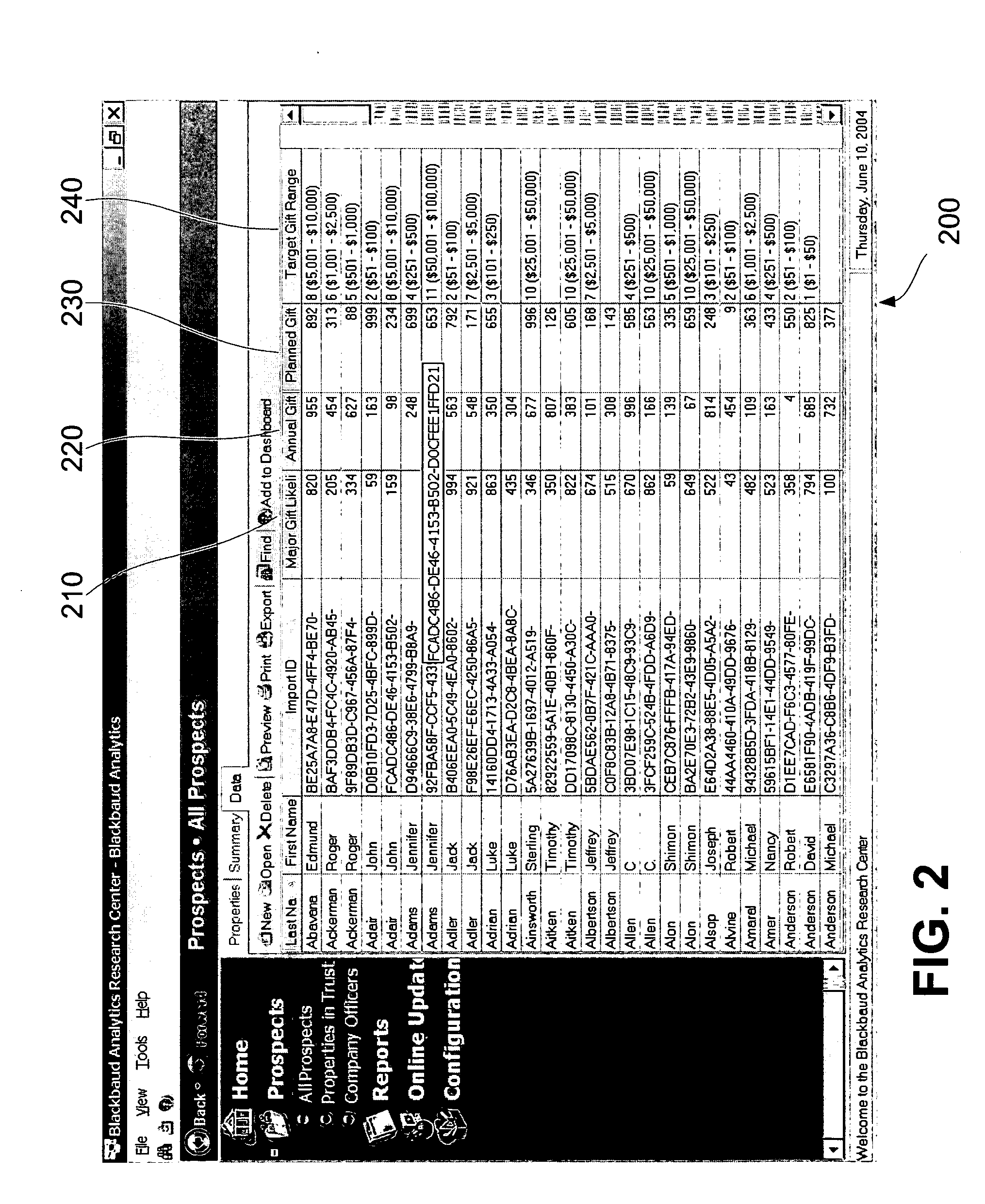Stated in another way, in the first aspect of the invention, a method of identifying best prospective donors from a pool of prospective donors of a non-profit organization, comprises the steps of obtaining
client data regarding the pool of prospective donors from the non-profit organization; obtaining public data from a
database, the public data including data specific to prospective donors in the pool and general
demographic data; merging the
client data with relevant portions of the public data to create composite data for each prospective donor in the pool; applying
statistical analysis to a plurality of key variables from the composite data; based on the applied
statistical analysis, generating a propensity
score for each prospective donor in the pool, each respective propensity
score indicative of the relative likelihood that the corresponding prospective donor will donate to the non-profit organization as compared to other prospective donors in the pool; based on the statistical analysis, generating a capacity
score for each prospective donor in the pool, each respective capacity score indicative of the financial ability of the corresponding prospective donor to donate to the non-profit organization; and providing the propensity and capacity scores for each prospective donor in the pool to the non-profit organization whereby the
non profit organization is able to target more effectively its requests for donations from the pool of prospective donors.
In another first aspect of the present invention, a method of identifying best prospective donors from a pool of prospective donors of a non-profit organization, comprises the steps of obtaining
client data regarding the pool of prospective donors from the non-profit organization, wherein the
client data comprises one or more of name, address, age, income, marital status, family status, involvement level with the non-profit organization, and donation history to the non-profit organization of each prospective donor in the pool; obtaining public data from a
database, the public data including data specific to prospective donors in the pool and general
demographic data; merging the
client data with relevant portions of the public data to create composite data for each prospective donor in the pool; generating statistical models having a plurality of key variables based on
probit regression analysis of the composite data; generating a plurality of propensity scores for each prospective donor in the pool by applying the statistical models to the plurality of key variables in the composite data, each of the plurality of propensity scores indicative of the relative likelihood that the corresponding prospective donor will donate an annual gift, a major gift, and a planned gift to the non-profit organization as compared to other prospective donors in the pool; and generating a capacity score for each prospective donor in the pool by applying the statistical models to the plurality of key variables in the composite data, each respective capacity score indicative of the financial ability of the corresponding prospective donor to donate to the non-profit organization; and providing the propensity and capacity scores for each prospective donor in the pool to the non-profit organization whereby the
non profit organization is able to target more effectively its requests for donations from the pool of prospective donors.
A second aspect of the present invention generally relates to a
system and methods for identifying the best planned giving vehicle to solicit from each prospective donor in the non-profit's database. Using statistical models, based on over 100,000 individuals from over 40 non-profit organizations, the present
system predicts the likelihood that a prospective donor will give one of five (5) different types of planned gifts, including bequests, charitable remainder trusts (CRT), charitable gift
annuity (CGA), pooled income fund (PIF), and life insurance policies. These models provide a non-profit organization with a more accurate way to segment their database according to those prospective donors most likely to make a specific type of planned gift. Such segmentation enables non-profits to send different marketing messages or solicitation packages to each segment, reducing expensive mailings and increasing the efficiency of their marketing efforts.
For example, prospective donors who have high CRT likelihood scores, meaning they have the characteristics of someone likely to establish a CRT, are targeted to receive a brochure outlining the benefits of establishing a CRT. Prospective donors who have high CGA / PIF likelihood scores are targeted to receive a brochure outlining the benefits of a contributing to the organization's Charitable Gift
Annuity or Pooled Income Fund. The response rates for each mailing increases since individuals are no longer confused by the vast array of options and since they are receiving planned gift information that is most relevant to them. Also, the expense of a fundraiser mailing has dramatically decreased. The brochures are smaller and the number of brochures mailed has decreased, since the organization can now mail to only those individuals most likely to give that specific type of planned gift. By better understanding the audience they are trying to reach and using market segmentation, non-profit organizations are able to improve the efficiency and effectiveness of their planned giving programs.
Stated another way, in the second aspect of the present invention, a method of identifying best prospective donors of a particular planned gift from a pool of prospective donors of a specific non-profit organization, comprises the steps of developing a
statistical model indicative of the likelihood of an individual to make the particular planned gift in contrast with other types of planned gifts, the
statistical model based on historical data of a plurality of individuals who have historically made donations of the particular planned gift to non-profit organizations, the
statistical model having a plurality of key variables; obtaining
client data regarding the pool of prospective donors from the specific non-profit organization; generating a propensity score for each prospective donor in the pool by applying the statistical model to the plurality of key variables in the client data, each respective propensity score indicative of the relative likelihood that the corresponding prospective donor will donate the planned gift to the specific non-profit organization as compared to other prospective donors in the pool; and providing the propensity score for each prospective donor in the pool to the non-profit organization whereby the
non profit organization is able to target more effectively its requests for donations using the planned gift from the pool of prospective donors.
 Login to View More
Login to View More  Login to View More
Login to View More 


